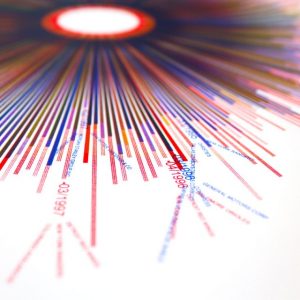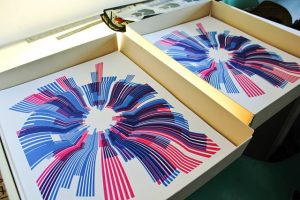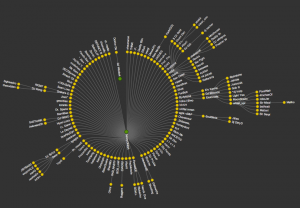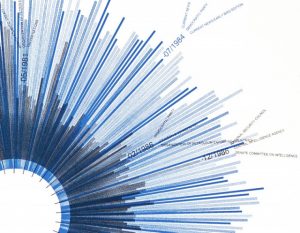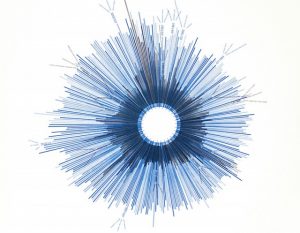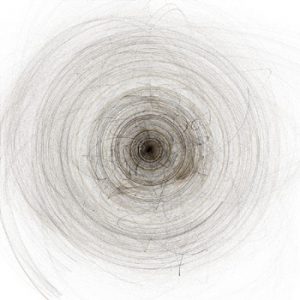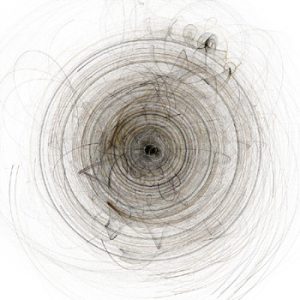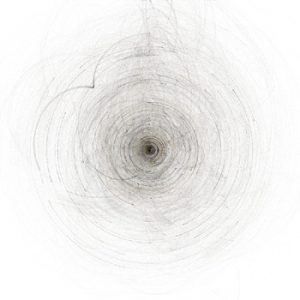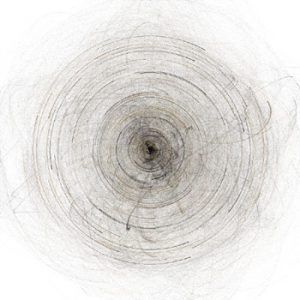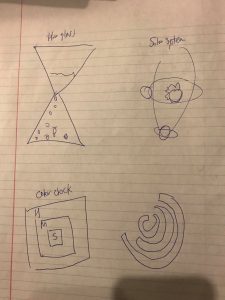Black Shoals Stock Market Planetarium is an art project in which the audience look up at a domed ceiling in which a computer projects the stock market in a system of stars and galaxies (like a planetarium). The project is presented in real-time and represents randomness in computational design in that it uses actual numbers of the stock market to deduce if, and which, stars glow, and how they move toward each other. The result of the installation is dependent on the activity of people in real life and determines how the planetarium looks at any given moment.
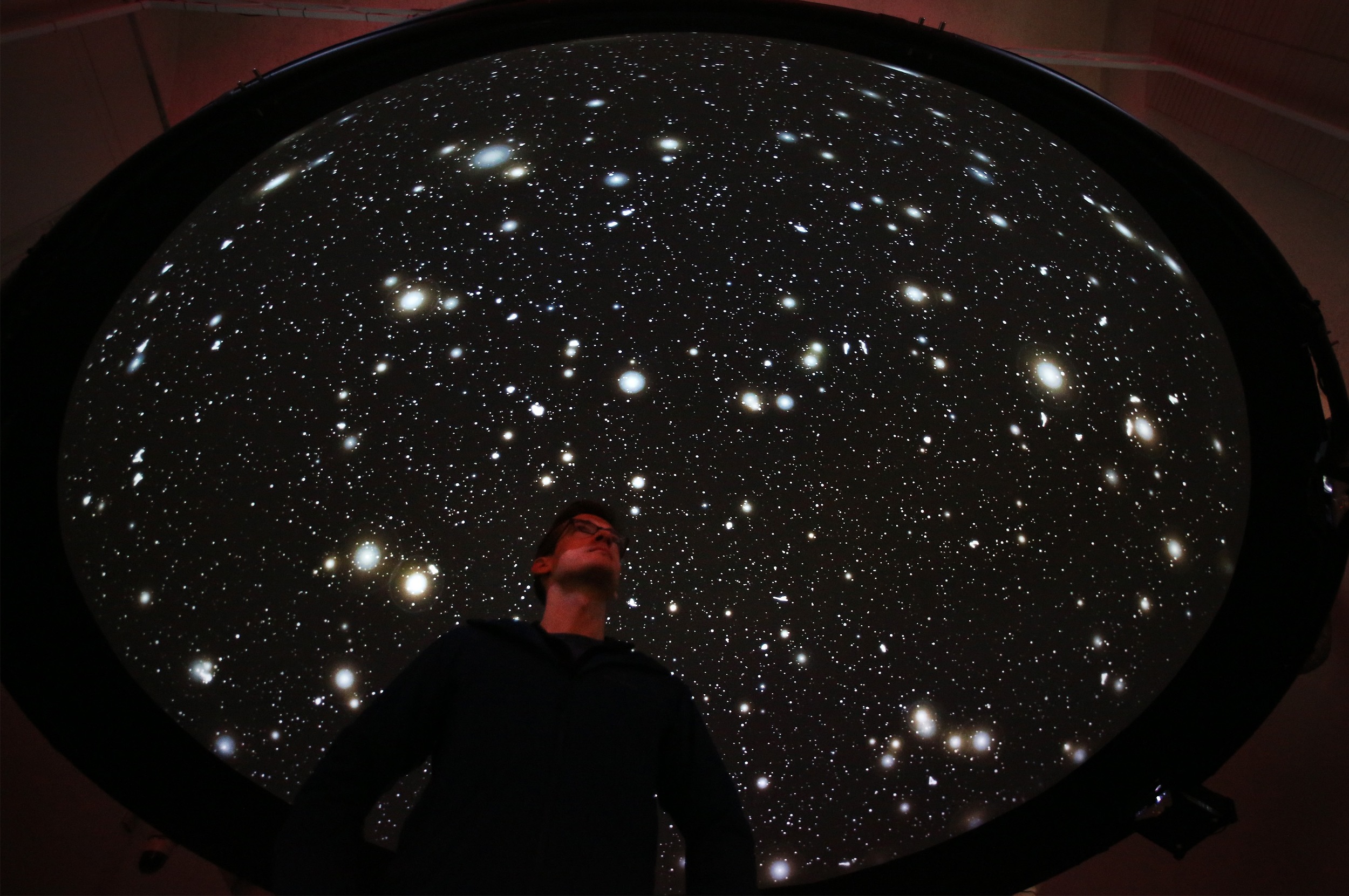
A visitor observing the project.
Each traded company is represented by a star, which glows as someone buys or sells a share. The stars do not stay stagnant; they drift and gather together according to the history of the company (the stronger the correspondence between two companies, the stronger the pull). Therefore, the stars can eventually form galaxies; however, they can also form black holes, in which specific stars, or companies, can be pulled into a vortex because of the collapse of a certain stock company. The stars start out randomly distributed at the beginning of the project but move toward each other and form ever-changing constellations, galaxies, and interesting outlines.
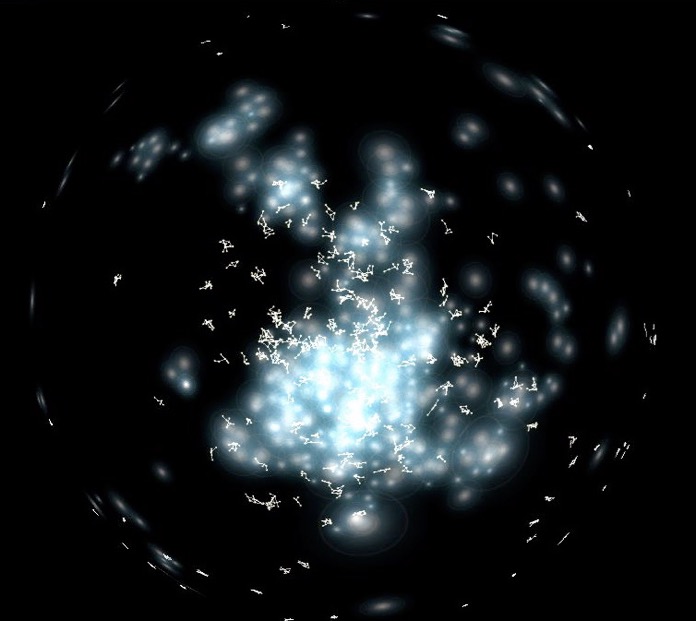
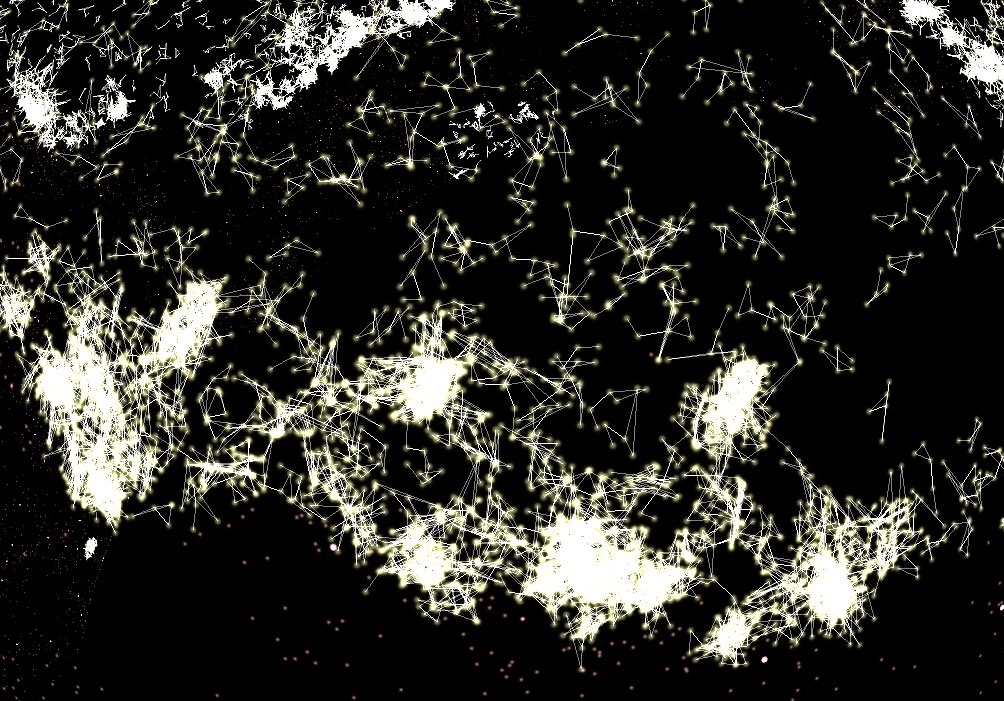
Two images produced by the planetarium at random moments of time.
![[OLD FALL 2018] 15-104 • Introduction to Computing for Creative Practice](../../../../wp-content/uploads/2020/08/stop-banner.png)
